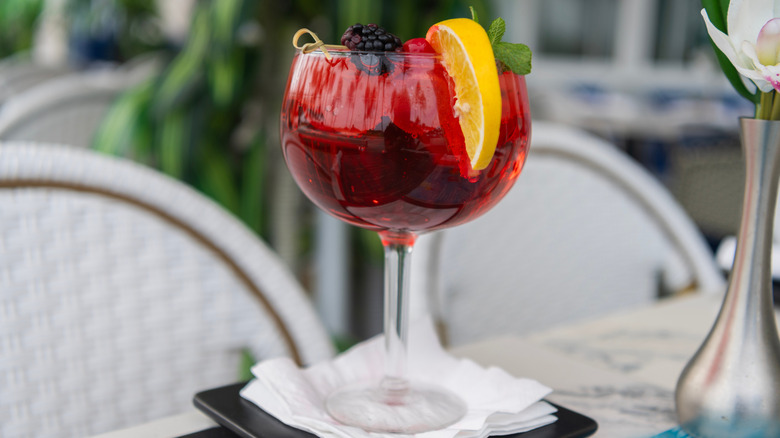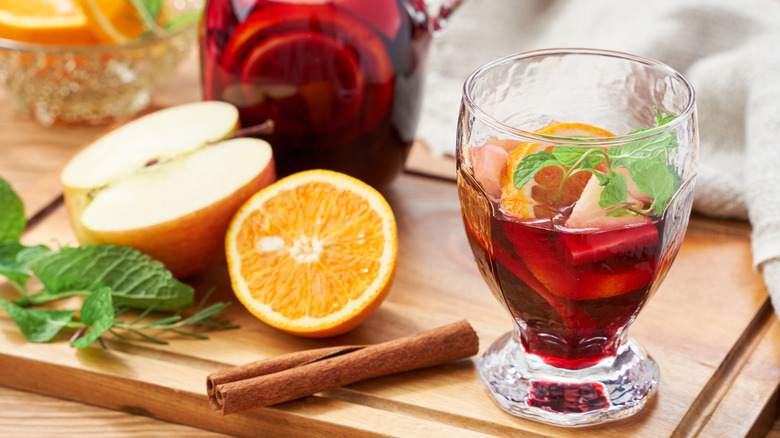When Making A Batch Of Sangria, Take Some Advice From A Mixologist
Crafting sangria is easy (red wine, fruit, brandy, juice and/or sugar — you know the drill), but if you take a little extra time to infuse your brew, you're in for an outstanding drink. We reached out to Molly Horn, Chief Mixologist and Spirits Educator at Total Wine & More, who gave us her top tips on fashioning the perfect batch. Horn recommends getting started early. "Make your sangria at least a day in advance, if possible two days, to really get the fruit to infuse into your batch," Horn explains. After slicing up your fruits, mix them into your sangria before placing your brew in the fridge to infuse until it's ready to serve. Taking the time to do this allows the batch to reach its fullest fruity potential.
As for what kind of fruit to use in your sangria, that's up to you. A more traditional take calls for apples, oranges, and lemon slices. The tartness of the apples does wonders in balancing the sweet drink, while the citrus ingredients bring brightness to the concoction. Feel free to mix it up, too. Our tropical sangria recipe is a real crowd-pleaser and is brought to life with a blend of kiwi, pineapple, mango, and papaya. Horn includes an ingredient that you might not have considered: "I also like to add a little bit of a fruit syrup to give it some extra juicy flavor — passion fruit is great with white, and raspberry works well with red!"
Enhance your sangria with complementary flavors
Being aware of the different flavor components will make your sangria harmonious. Embody an oakier flavor with the addition of cinnamon sticks and a cinnamon brandy. For a revitalizing take, use white wine, triple sec, and pineapple chunks. You can also include passion fruit syrup, as Molly Horn suggests. Enjoy a light and fruity take by incorporating rosé, sliced strawberries, peaches, watermelon, raspberries, and vodka. Jazz up a classic sangria with a high-quality cognac or Cointreau for an elegant orange citrus component. For a hit of herbal freshness, add mint, basil, or rosemary.
According to Horn, this applies to selecting wine for sangria as well. "For white or red Sangria or other non-sparkling wine cocktails, you still want to avoid sweet and fruit-flavored wines, as well as super heavy, intense wines (like a bold Cabernet) that will overpower other flavors and also add too much tannin to the cocktail," she states. Fortunately, you can use cheap wine and still make great sangria.

